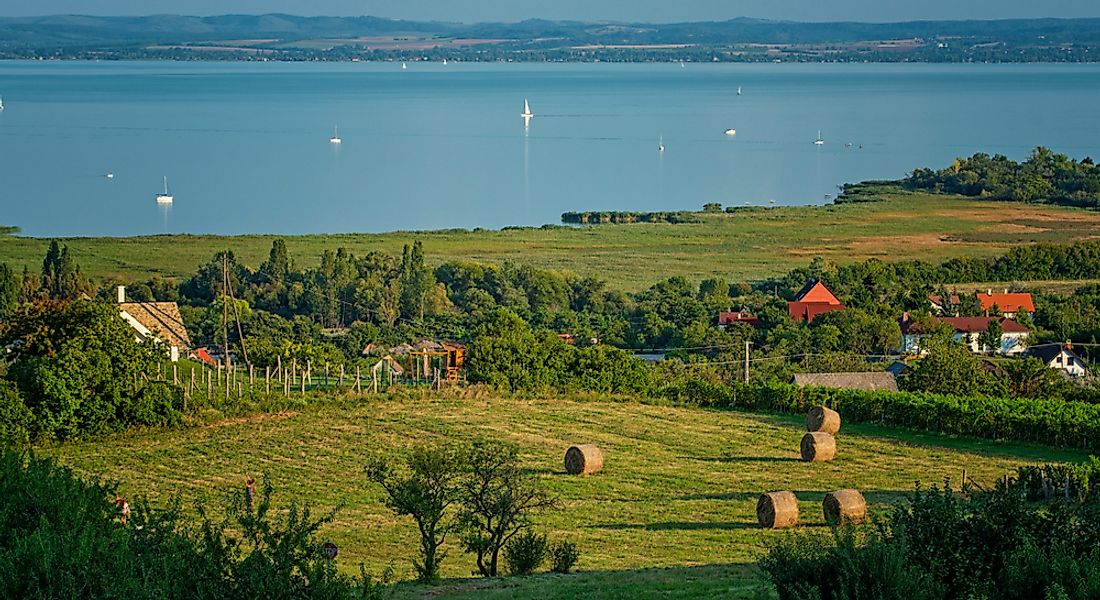What Are The Major Natural Resources Of Hungary?

Hungary has a wide wealth of natural resources. The World Bank estimated that in 2019, the Hungarian gross domestic product would be the 58th highest in the world at $164 billion while its per capita gross domestic product would be the 54th highest in the world at $16,905.
Here is a list of some of Hungary's most valued natural resources:
Arable Land
One of Hungary's most vital natural resources is its arable land, which covered roughly 59% of the country's land in 2015. Data indicates that since 2008, when arable land covered roughly 65% of Hungary's land, the size of arable land in Hungry has been decreased significantly. The vast size of arable land in Hungary is an indication of the importance of the agriculture sector to the country's economy. However, due to the Hungarian government's policy of economic diversification, agriculture's role has been declining over the years.
Grapes
Historical evidence indicates that Hungarian farmers have been growing grapes for a long time, beginning at least in the 5th century when the Romans introduced grapes to the Pannonia region. Since the Roman era, several kinds of grapes were introduced from other nations primarily France and Italy. Hungary's grapes are chiefly used to make wine which is one of the country's most important products. Some of the most common types of grapes in Hungary include Hárslevelű, Cserszegi fűszeres, and Irsai Oliver all of which are native to the country.
Livestock
Hungarian farmers keep animals such as cattle and sheep that are some of the country's most critical natural resources. During the 1990s, the Hungarian government introduced new policies to improve the country's livestock sector. The reforms were part of the government's effort to transform the country's economy into a free market economy. The government's plans were relatively successful as it led to significant improvements in the sector.
Forests
According to the World Bank, in 2015, roughly 23% of Hungary's territory was covered in forests. Since 2009, Hungary's forest cover has been increasing at a gradual rate mainly due to the government's policies emphasizing the importance of forest conservation. During the period when Hungary was under communist rule, the country's forest resources were mismanaged leading to a rapid decline in the country's forest cover. Research indicates that nearly all the forests in Hungary were classified as temperate forests. In 2005, the Hungarian government had designated roughly 65% of the country's forest for the production of wood products.
Beautiful Scenery
Hungary's beautiful scenery is another of its most important natural resources. Hungary has beautiful sites spread all across the country with the country's central region having the highest concentration of tourist attraction sites. The capital, Budapest, is one of the chief attractions in the country's central region. In the country's western edge, the most popular tourist destination is Lake Balaton, the largest freshwater lake in the central region of Europe. In 1994, the Hungarian government estimated that more than 2 million tourists visited the lake. The scenery attracts tourists from all over the world, and the tourism sector is one of the country's most vital industries.
Fish
Hungary also has significant quantities of fish which are vital to the country's economy. Because Hungary is a landlocked nation, fishing in the country is restricted to inland waterways such as rivers and lakes. Fishers in Hungary have to obtain permits from the Hungarian government before they fish in any of the country's natural waterways. Hungarian fishers have also invested in aquaculture to increase the quantity of fish in the country. One of the most commonly kept species of fish in Hungarian fish farms is the common carp. During the 1990s, the most significant challenge facing Hungary's fishing sector was insufficient funds to improve the sector.
Natural Gas
Hungary has been blessed with significant quantities of natural gas that are essential to its economic growth. In 2017, the Hungarian government estimated that the country had more than 70 billion cubic feet of natural gas. The Hungarian government estimated that during the early 21st century, the country's natural gas production only accounted for 25% of the nation's demand. The government planned to increase the production of natural gas to satisfy the local demand.











